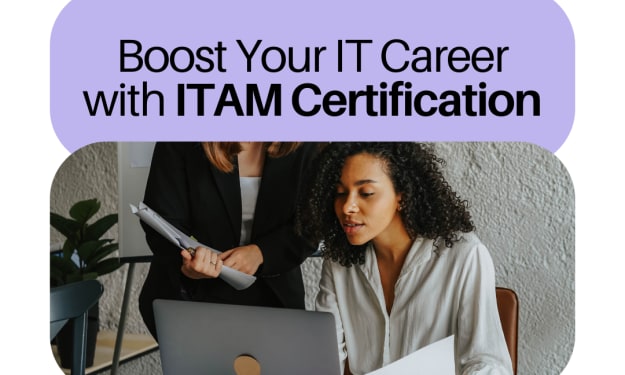Rapid eLearning: Revolutionizing Modern Education and Training
Rapid eLearning

In the fast-paced world of modern education and corporate training, the need for quick, efficient, and effective learning solutions has never been more critical. Enter rapid eLearning, a methodology that leverages technology to create and deploy learning content swiftly. This approach has gained popularity due to its ability to address the evolving needs of learners and organizations alike. In this article, we will delve into the concept of rapid eLearning, its benefits, development process, and best practices to maximize its impact.

What is Rapid eLearning?
Rapid eLearning refers to the process of designing and developing eLearning courses quickly, typically within weeks rather than months. It focuses on speed without compromising the quality of the learning experience. This methodology often utilizes pre-existing templates, tools, and frameworks to expedite the creation of interactive and engaging content.
Key Benefits of Rapid eLearning
- Speed and Efficiency: The primary advantage of rapid eLearning is its ability to deliver learning solutions quickly. This is particularly valuable in dynamic industries where information and skills need to be updated frequently.
- Cost-Effective: Rapid eLearning reduces the time and resources required for course development. By using pre-built templates and streamlined processes, organizations can save on production costs.
- Flexibility: This approach allows for easy updates and modifications. If content needs to be changed or new information needs to be added, it can be done swiftly without a complete overhaul of the course.
- Scalability: Rapid eLearning solutions can be easily scaled to accommodate different numbers of learners, making it suitable for organizations of all sizes.
- Consistency: Standardized templates and tools ensure that the learning experience is consistent across different courses and modules.

The Rapid eLearning Development Process
The development process for rapid eLearning typically involves several key steps:
- Needs Analysis: Identify the learning objectives, target audience, and content requirements. This step ensures that the course will meet the specific needs of the learners and the organization.
- Content Collection: Gather existing content, resources, and materials that can be repurposed for the eLearning course. This may include documents, presentations, videos, and other media.
- Storyboarding: Create a detailed storyboard that outlines the course structure, content flow, and interactive elements. This serves as a blueprint for the course development.
- Template Selection: Choose pre-built templates and tools that match the course objectives and design preferences. Many rapid eLearning authoring tools offer a variety of customizable templates.
- Content Development: Populate the chosen templates with the collected content. This involves adding text, images, videos, quizzes, and other interactive elements.
- Review and Testing: Conduct thorough reviews and testing to ensure the course is free of errors and functions as intended. This step involves feedback from subject matter experts and pilot testing with a sample audience.
- Deployment: Once the course has been finalized, it is deployed to the learning management system (LMS) or another delivery platform. This allows learners to access the course anytime, anywhere.
- Evaluation and Feedback: Collect feedback from learners and analyze the effectiveness of the course. This information is crucial for making improvements and updates in the future.
Best Practices for Rapid eLearning
To ensure the success of rapid eLearning initiatives, consider the following best practices:
- Leverage Existing Content: Use pre-existing materials to save time and effort. Repurpose content from previous training sessions, presentations, and documents.
- Focus on Essential Content: Prioritize the most critical information and learning objectives. Avoid overloading learners with unnecessary details.
- Use Interactive Elements: Incorporate quizzes, simulations, and other interactive elements to enhance engagement and retention.
- Keep it Simple: Design the course with a clean and straightforward layout. Avoid overly complex graphics and navigation that can distract learners.
- Iterate and Improve: Continuously collect feedback and make improvements. Rapid eLearning allows for easy updates, so take advantage of this flexibility to refine the course over time.
- Collaborate with SMEs: Work closely with subject matter experts to ensure the content is accurate and relevant. Their insights are invaluable for creating high-quality learning materials.

Conclusion
Rapid eLearning is a powerful methodology that addresses the need for quick and efficient learning solutions in today’s fast-paced world. By leveraging technology, templates, and streamlined processes, organizations can create engaging and effective eLearning courses in a fraction of the time. By following best practices and focusing on essential content, rapid eLearning can deliver significant benefits, from cost savings to improved learner engagement and knowledge retention. As the demand for agile learning solutions continues to grow, rapid eLearning will undoubtedly play a crucial role in the future of education and training.
About the Creator
Enjoyed the story? Support the Creator.
Subscribe for free to receive all their stories in your feed. You could also pledge your support or give them a one-off tip, letting them know you appreciate their work.





Comments
There are no comments for this story
Be the first to respond and start the conversation.